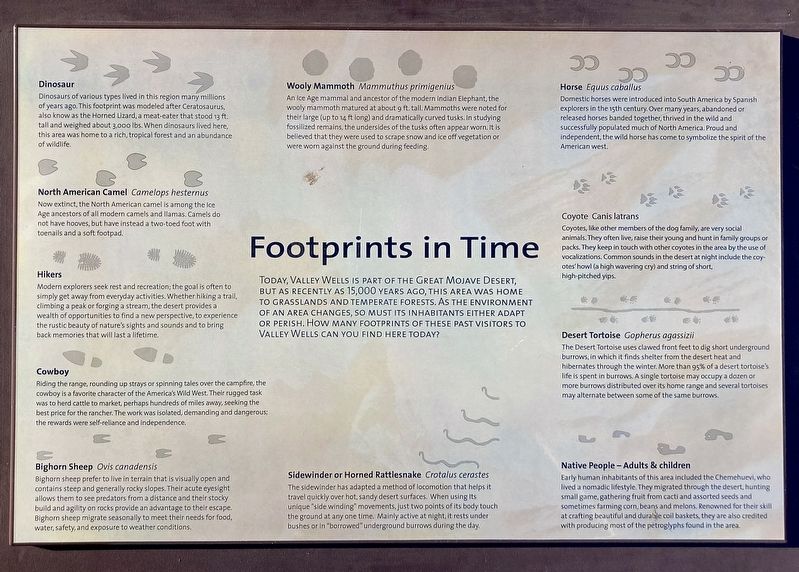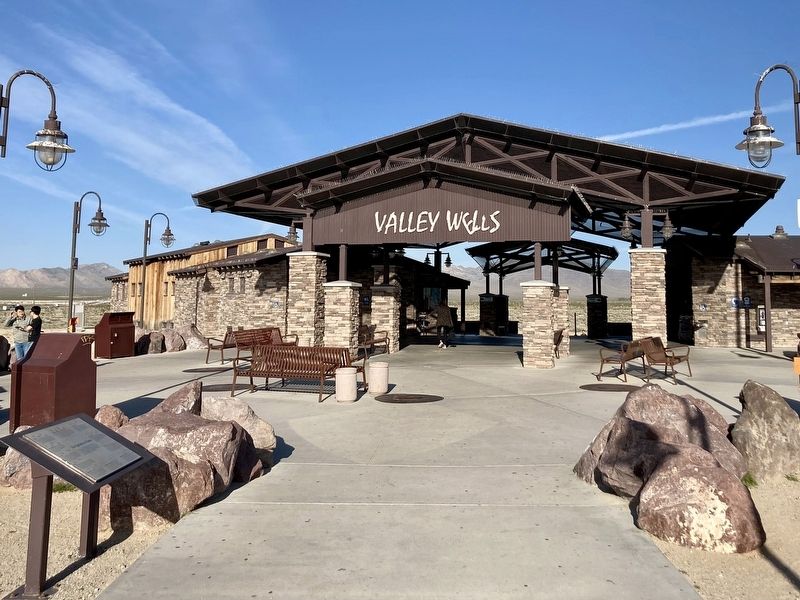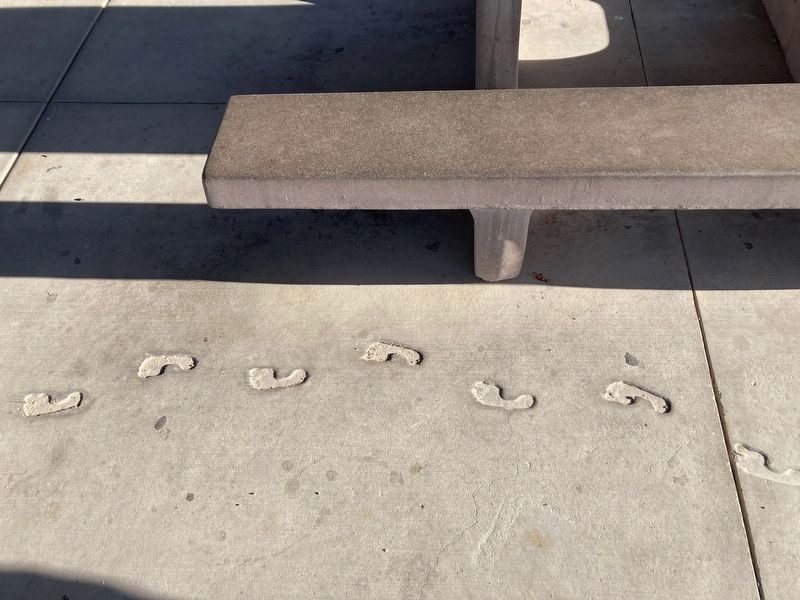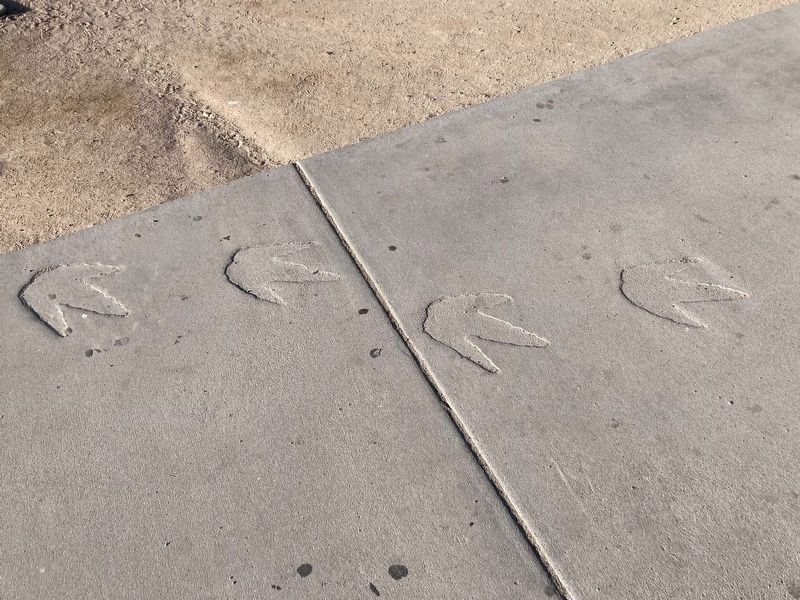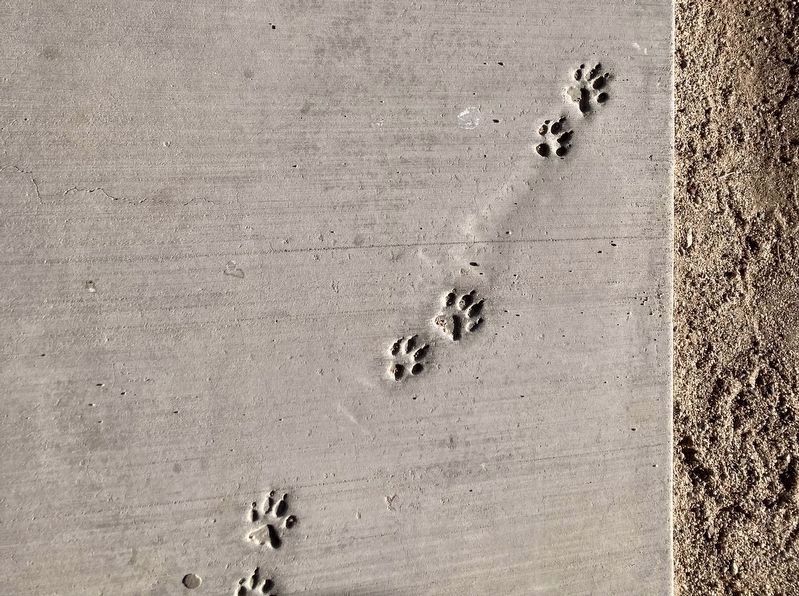Near Mountain Pass in San Bernardino County, California — The American West (Pacific Coastal)
Footprints in Time
Today, Valley Wells is part of the Great Mojave Desert, but as recently as 15,000 years ago, this area was home to grasslands and temperate forests. As the environment of an area changes, so must its inhabitants either adapt or perish. How many footprints of these past visitors to Valley Wells can you find here today?
Native People - Adults & children
Early human inhabitants of this area included the Chemehuevi, who lived a nomadic lifestyle. They migrated through the desert, hunting small game, gathering fruit from cacti and assorted seeds and sometimes farming corn, beans and melons. Renowned for their skill at crafting beautiful and durable coll baskets, they are also credited with producing most of the petroglyphs found in the area.
Cowboy
Riding the range, rounding up strays or spinning tales over the campfire, the cowboy is a favorite character of the America's Wild West. Their rugged task was to herd cattle to market, perhaps hundreds of miles away, seeking the best price for the rancher. The work was isolated, demanding and dangerous: the rewards were self-reliance and independence.
Hikers
Modern explorers seek rest and recreation; the goal is often to simply get away from everyday activities. Whether hiking a trail, climbing a peak or forging a stream, the desert provides a wealth of opportunities to find a new perspective, to experience the rustic beauty of nature's sights and sounds and to bring back memories that will last a lifetime.
Horse Equus caballus
Domestic horses were introduced into South America by Spanish explorers in the 15th century. Over many years, abandoned or released horses banded together, thrived in the wild and successfully populated much of North America, Proud and independent, the wild horse has come to symbolize the spirit of the American west.
Dinosaur
Dinosaurs of various types lived in this region many millions of years ago. This footprint was modeled after Ceratosaurus, also know as the Horned Lizard, a meat-eater that stood 13 ft. tall and weighed about 3,000 lbs. When dinosaurs lived here, this area was home to a rich, tropical forest and an abundance of wildlife.
Wooly Mammoth Mammuthus primigenius
An Ice Age mammal and ancestor of the modern indian Elephant, the wooly mammoth matured at about 9 ft. tall. Mammoths were noted for their large (up to 14 ft long) and dramatically curved tusks. In studying fossilized remains, the undersides of the tusks often appear worn. it is believed that they were used to scrape snow and ice off vegetation or were worn against the ground during feeding.
North American Camel Camelops hesternus
Now extinct, the North American camel is among the Ice Age ancestors of all modern camels and llamas, Camels do not have hooves, but have instead a two-toed foot with toenails and a soft footpad.
Bighorn Sheep Ovis canadensis
Bighorn sheep prefer to live in terrain that is visually open and contains steep and generally rocky slopes. Their acute eyesight allows them to see predators from a distance and their stocky build and agility on rocks provide an advantage to their escape. Bighom sheep migrate seasonally to meet their needs for food, water, safety, and exposure to weather conditions.
Sidewinder or Horned Rattlesnake Crotalus cerastes
The sidewinder has adapted a method of locomotion that helps it travel quickly over hot, sandy desert surfaces. When using its unique "side winding" movements, just two points of its body touch the ground at any one time. Mainly active at night, it rests under bushes or in "borrowed" underground burrows during the day.
Coyote Canis latrans
Coyotes, like other members of the dog family, are very social animals. They often live, raise their young and hunt in family groups or packs. They keep in touch with other coyotes in the area by the use of vocalizations. Common sounds in the desert at night include the coy- oteshow! (a high wavering cry) and string of short, high-pitched yips.
Desert Tortoise Gopherus agassizii
The Desert Tortoise uses clawed front feet to dig short underground burrows, in which it finds shelter from the desert heat and hibernates through the winter. More than 95% of a desert tortoise's life is spent in burrows. A single tortoise may occupy a dozen or more burrows distributed over its home range and several tortoises may alternate between some of the same burrows.
Topics. This historical marker is listed in these topic lists: Agriculture • Animals • Native Americans • Settlements & Settlers.
Location. 35° 26.029′ N, 115° 41.973′ W. Marker is near Mountain Pass, California, in San Bernardino County. Marker is on Interstate 15, 25 miles north of Baker, on the right when traveling north. Located at Valley Wells Rest Area on Interstate 15. Touch for map. Marker is in this post office area: Nipton CA 92364, United States of America. Touch for directions.
Other nearby markers. At least 7 other markers are within walking distance of this marker. Modern Highways (approx. 0.2 miles away); Western Expansion (approx. 0.2 miles away); Railroads Revolutionize Transportation (approx. 0.2 miles away); Who Has Lived Here? (approx. 0.2 miles away); Ranching and Mining (approx. 0.2 miles away); Movement in the Desert (approx. 0.2 miles away); Valley Wells (approx. 0.2 miles away).
More about this marker. Identical ‘Footprints in Time’ markers are located in the rest areas on the north-bound side and the south-bound side of Interstate 15.
Credits. This page was last revised on June 4, 2023. It was originally submitted on April 25, 2023, by Craig Baker of Sylmar, California. This page has been viewed 56 times since then and 16 times this year. Photos: 1, 2, 3, 4, 5. submitted on April 25, 2023, by Craig Baker of Sylmar, California.
